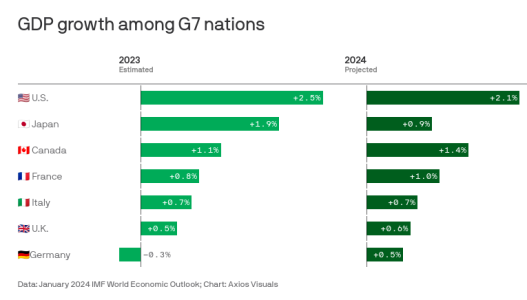Violent crime is dropping fast in the U.S. — even if Americans don't believe it NPR
In 2020, the United States experienced one of its most dangerous years in decades.
The number of murders across the country surged by nearly 30% between 2019 and 2020,
according to FBI statistics. The overall violent crime rate, which includes murder, assault, robbery and rape, inched up around 5% in the same period.
But in 2023, crime in America looked very different.
"At some point in 2022 — at the end of 2022 or through 2023 — there was just a tipping point where violence started to fall and it just continued to fall," said Jeff Asher, a crime analyst and co-founder of AH Datalytics.
In cities big and small, from both coasts, violence has dropped.
"The national picture shows that murder is falling. We have data from over 200 cities showing a 12.2% decline ... in 2023 relative to 2022," Asher said, citing
his own analysis of public data. He found instances of rape, robbery and aggravated assault were all down too.
Yet when you ask people about crime in the country, the perception is it's getting a lot worse.
A
Gallup poll released in November found 77% of Americans believed there was more crime in the country than the year before. And 63% felt there was either a "very" or "extremely" serious crime problem — the highest in the poll's history going back to 2000.
...
There are some outliers to this trend — murder rates are up in Washington, D.C., Memphis and Seattle, for example — and some
nonviolent crimes like car theft are up in certain cities. But the national trend on violence is clear.
...
"We've seen two years now of crime incrementally going down, which I think is enough to say there's a positive trend there," said Andy Mannix, a crime and policing reporter for the
Star Tribune in Minneapolis.
Rachel Swan, a breaking news and enterprise reporter for the
San Francisco Chronicle, says there are "two really visible crises" in the downtown area: homelessness and open-air drug use.
"And honestly, people conflate that with crime, with street safety," she said. "One thing I'm starting to learn in reporting on public safety is that you can put numbers in front of people all day, and numbers just don't speak to people the way narrative does."
In Baltimore — a city that's battled a perception of being dangerous — it's a similar story.
Lee Sanderlin is an enterprise reporter with
The Baltimore Banner and says there are pockets of violent crime — but that's not the case for the entire city.
"That's a battle that the city's leaders have had to fight with certain media outlets, with residents," Sanderlin said. "People who don't live in Baltimore, who live out in Baltimore County or neighboring counties, they certainly have a perception."
...
Asher, the crime analyst, says there is no one reason why violent crime is going down.
"It's a really hard question to answer, and I always caveat my answer with [saying that] criminologists still aren't sure why violent crime went down in the '90s," he said. "We can kind of point to what some of the ingredients probably are even if we can't take the cake and tell you what the exact recipe is."
...
